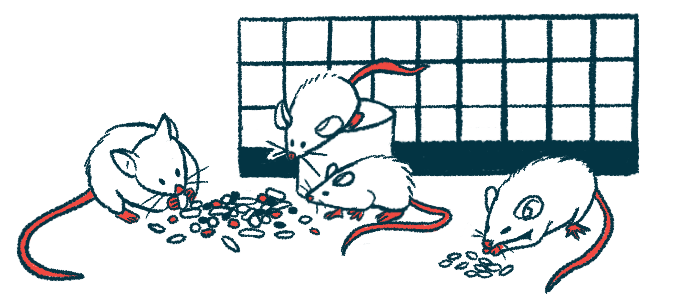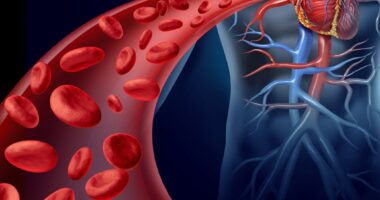Impaired Energy Balance May Explain Sanfilippo Energy Demands

A mouse model of Sanfilippo syndrome had persistent energy demands driven by activated heat-generating fat cells and impaired recycling of energy-producing mitochondria, a study revealed.
These findings may explain the negative energy balance seen in Sanfilippo patients, which can lead to wasting in severe cases, despite adequate food intake, the scientists noted.
The study, “Impaired Mitophagy in Sanfilippo A mice Causes Hypertriglyceridemia and Brown Adipose Tissue Activation,” was published in the Journal of Biological Chemistry.
Sanfilippo syndrome, or mucopolysaccharidosis type III (MPS III), is an inherited genetic condition described as a form of childhood dementia.
It’s caused by mutations in genes that encode enzymes that break down the complex sugar molecule heparan sulfate. This results in its toxic buildup inside lysosomes, structures within cells that recycle molecules for reuse, giving rise to tissue damage, especially in the brain.
Lysosomal accumulation of heparan sulfate can significantly impact the whole-body energy balance. Wasting, or cachexia, can be seen in those with severe lysosomal disease, despite an adequate intake of food, a phenomenon that’s also seen in mouse models. However, the underlying mechanism remains poorly understood.
Triglycerides (TGs) are a type of fat that provides a major source of energy. Acquired through diet or generated in the liver during fasting, TGs supply fatty acids for energy production in the heart and other tissues. Adipocytes are fat cells that store TGs for use when needed.
Researchers at the University of California, San Diego investigated a mouse model of Sanfilippo type A to better understand the role of TGs and impaired energy balance in Sanfilippo and other lysosome-related conditions. The model lacked one of the enzymes that break down heparan sulfate.
Under fasting conditions, the mutant mice had elevated TGs in the bloodstream, referred to as hypertriglyceridemia, as shown by an approximate 40% increase compared to normal, or wild-type (WT) mice. After feeding the mice corn oil, Sanfilippo A mice demonstrated impaired fat clearance, with TGs remaining high even four hours after feeding.
Bloodstream TGs arise either through diet, transported in structures called chylomicrons produced by the small intestine, or liver production, transported by complexes known as very low-density lipoproteins (VLDLs). Experiments indicated enhanced intestinal fat absorption was responsible for elevated TGs in Sanfilippo A mice, not liver production.
Further tests confirmed that impaired lysosome function did not affect the activity of lipoprotein lipases, enzymes that digest TGs to produce free fatty acids, or the clearance of VLDLs.
To determine the fate of dietary TGs in the body, mice were fed corn oil plus radioactively labeled triolein, a TG commonly found in olive oil. Fat uptake into brown adipose tissue (BAT) was 2.4-times higher in mutant mice than in WT mice but significantly less in white adipose tissue (WAT). WAT is for fat storage, while BAT uses fat for heat generation, which also has more iron-containing mitochondria, giving it its color.
Heat is generated in brown adipose tissue by metabolizing high caloric nutrients, such as fats and glucose, while uncoupling the production of chemical energy in the form of ATP. Compared to WT mice, mutant mice had significantly increased energy expenditure, expressed as heat, which was not due to changes in body movements, oxygen consumption, or carbon dioxide production. Accordingly, mutant mice had higher body temperatures.
Mice were then treated with a compound that blocked fatty acid delivery to brown adipose tissue. At room temperature, the body temperature of the mutants remained elevated. But, when exposed to a cold environment, only mutant mice became severely hypothermic, had severe weight loss, and were close to death. Experiments then confirmed that glycogen, a complex sugar that provides a source of glucose for energy, was higher in the liver and muscle in mutant mice.
These findings indicated that Sanfilippo mice did not properly access their typical energy stores, such as glycogen, but instead relied on dietary fats to maintain normal body temperatures and energy balance, the researchers said.
Tissue analysis showed the brown adipose tissue of mutant mice had a significant buildup of autophagosomes — compartments within cells that collect cellular waste, which is then transported to lysosomes for recycling.
This impaired process, known as autophagy, was associated with a significant increase in the numbers of mitochondria and autophagosomes carrying mitochondria, which may explain excess heat generation, the researchers noted. Further experiments confirmed that impaired recycling of mitochondria, called mitophagy, caused by lysosomal dysfunction, was driving the mitochondrial buildup.
Lastly, mutant mice treated with the enzyme missing in Sanfilippo A, in the form of enzyme replacement therapy, showed a dramatic reduction in brown adipose tissue autophagosomes and mitochondrial markers and restored proper post-feeding clearance of TGs.
“We hypothesize that increased [brown adipose tissue] activity and persistent increase in energy demand in [Sanfilippo] mice can contribute to the progressively elevated energy demand observed in [Sanfilippo] and other [lysosomal storage disease] patients,” the researchers concluded, noting their findings “warrant additional studies in humans to determine their clinical relevance and to better understand the [cause] of the increased intestinal lipoprotein secretion in the gut and its connection to [brown adipose tissue] hyperactivity.”






